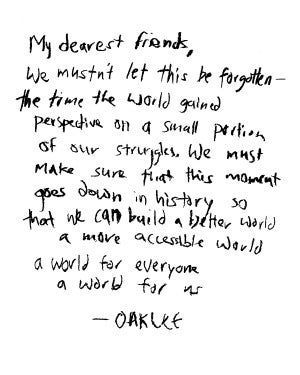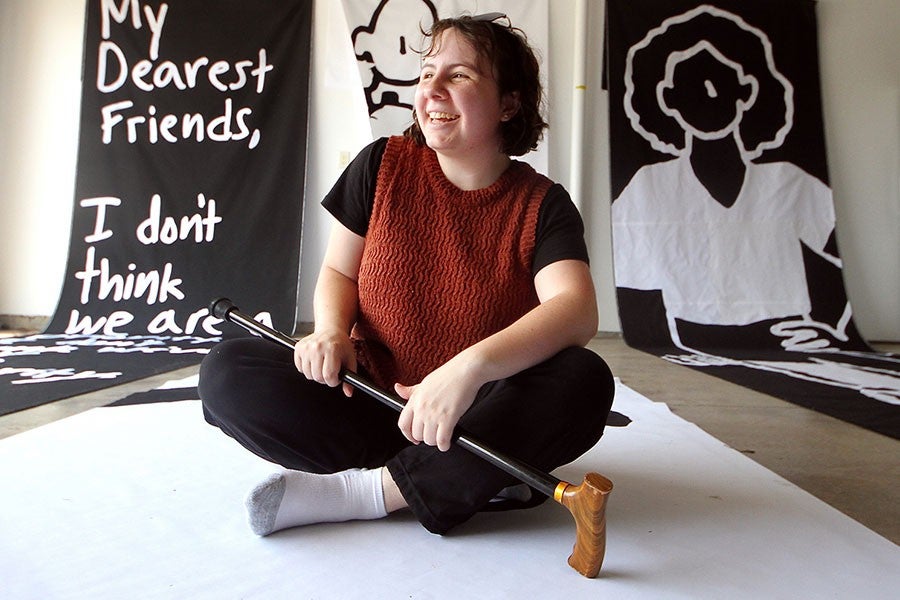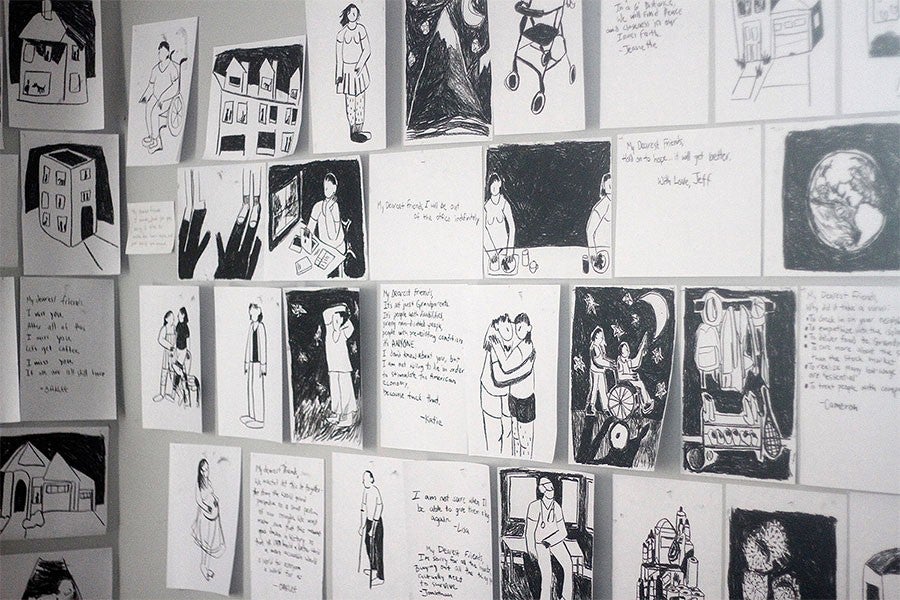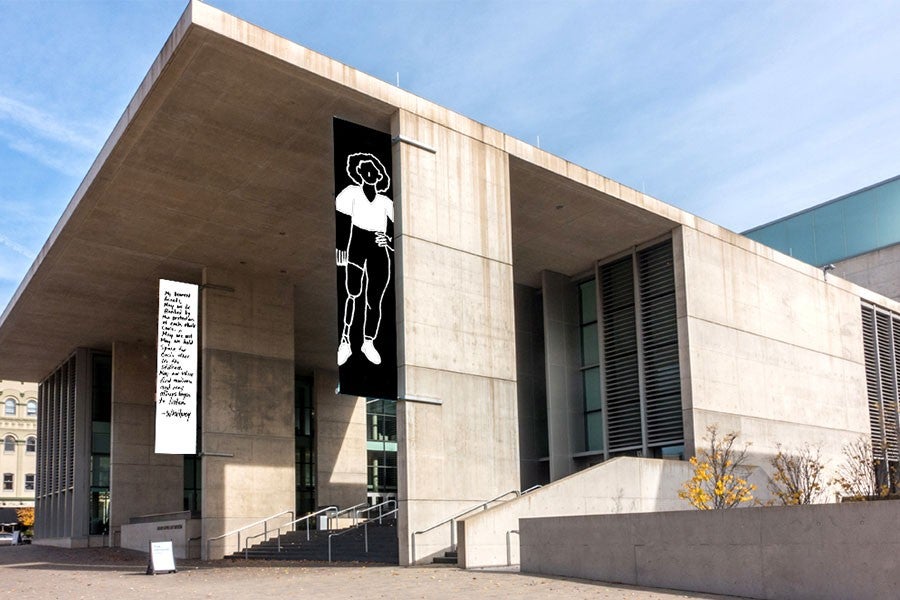Creating a more accessible world
An exhibition by Arts Academy alum Oaklee Thiele at the Grand Rapids Art Museum amplifies the voices of those who often feel forgotten or pushed aside by society.

Oaklee Thiele's original poem, "My Dearest Friends."
When Oaklee Thiele (IAA 15-17) penned these words and posted them to Instagram in March 2020, she had no idea that they would take on a life of their own. Eighteen months later, the same words and ideas will grace the exterior walls of the Grand Rapids Art Museum.
In the early days of the pandemic, many people had their first encounter with vulnerability as everyday lives suddenly became fraught with uncertainty and risk. For a short time, this feeling of helplessness seemed to bring people together, but that sense of solidarity began to fray when it became clear that the dangers of the pandemic were not equally distributed.
“All of a sudden, the feeling seemed to change,” Thiele said. “I heard from people, from the news, and even from some of my family and friends. They were all saying, ‘don’t worry, only the chronically ill and disabled will die.’ Well, that’s terrifying—because that is me. I am a chronically ill and disabled person.”
As Thiele began to meet other artists in the disabled community, she connected with DisArt, a production company and arts organization that creates public art events that celebrate and share disability culture. “We met [Thiele] while producing DisArt’s Voices Exhibition,” said Jill Vyn, co-director of DisArt. “Her Instagram post just spoke to us. Since we were already acquainted with her and her work, it was an easy decision to reach out and explore how we could work together again.”
Thiele and DisArt collaborated to amplify Thiele’s original social media post, turning it into a call to action and inviting disabled people to share their experiences of marginalization and discrimination during and before the pandemic. In a short time, they had received 350 submissions from around the world.
Each submission to the project starts with the same few words as Thiele’s initial Instagram post: “My Dearest Friends …” and then goes on to share a personal experience about disability, discrimination, or ableism, before signing off with their name or a pseudonym. Thiele then creates an illustration for each message.
Some shared fears and sorrow, while others encouraged the disability community to fight for recognition and accommodations. “Through this difficult time, people are really terrified and angry,” Thiele said. “But I think this project brings some peace because we were all able to find some solace in these shared experiences and build a stronger sense of community.”
“Her work is so engaging, relatable, and personal that people immediately connect to it, and the people in the disability community who are drawn to this project are bringing it to life,” Vyn said. "Our community deserves a platform, and that feeling is driven by a desire for real social change. DisArt, like [Thiele], is committed to calling out ableist perspectives and inaccessibility. This shared mission made for fluid collaboration.”
As submissions poured in during the early days of the pandemic, Thiele, Vyn, and DisArt began to consider how their project could translate into the offline or “real” world. The obvious answer was ArtPrize.
Launched in 2009, ArtPrize is an 18-day event that fills downtown Grand Rapids with artwork created by artists from around the world. Artists can enter their work in ArtPrize and display their work anywhere they can get permission to do so. Art can be found in and around every corner of the city: in museums, galleries, parks, bars, stores, on bridges, and around many other nontraditional venues. Substantial prizes and grants are awarded based on the recommendations of a popular vote and an experienced jury. The event attracts more than 20,000 visitors a day.
Thiele’s artwork is now being transformed into large banners which will cover all four sides of the Grand Rapids Art Museum (GRAM). The enormous scale of the work serves to counterbalance the lack of disability presence in our society.
While Thiele is still stunned by the idea of seeing her drawings at such a scale, she is not surprised at how it all happened: through collaboration. “Something I really learned at Interlochen was how to collaborate. So many of our projects at Interlochen were collaborative. I worked not only with other visual artists, but also with writers and musicians, so doing a project like this that incorporated the ideas of so many other people came very naturally."
“My Dearest Friends” can be seen at Grand Rapids Art Museum throughout ArtPrize, from Sept. 16 through Oct. 3. It will then remain on display at the museum through the end of October.


